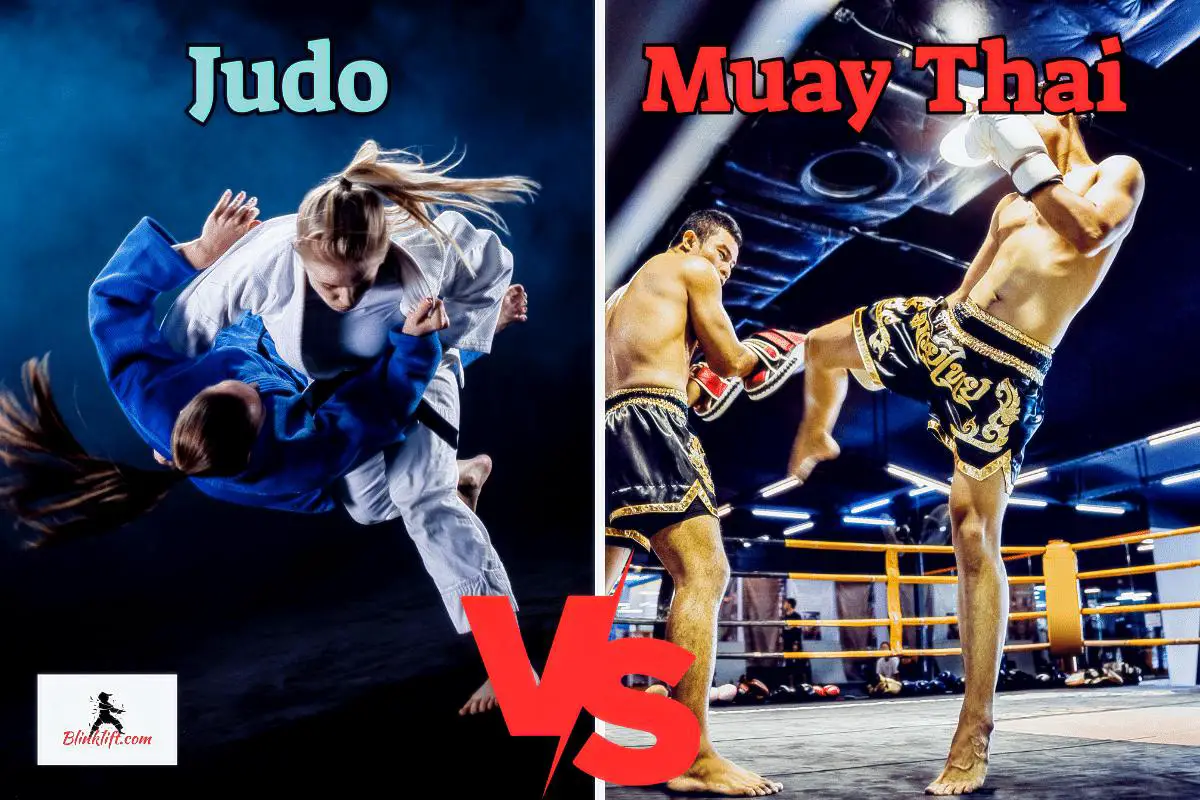Judo, aka “Gentle Art” and Muay Thai, aka “The Art of Eight Limbs” are two extremely powerful and popular martial arts worldwide. What they do best is teach their trainees to fight effectively. However, each of them does it differently, which makes for beautiful fights when arranging a meeting between the two parties.
On the one hand, Judo is a grappling-based martial art that teaches takedowns, throws, and some submissions, such as chokes and elbow locks. On the other hand, Muay Thai, aka “The Art of Eight Limbs”, teaches strikes, including punches, kicks, elbows, and knees while teaching clinching and some throws.
Just from the description of these two fighting styles, we can understand that they’re highly effective. If you examine these martial arts and face them against each other, what you’ll get is more than an interesting fight. It’ll be a battle I would definitely sign up to watch.
In the past few years, various organizations have made this happen and faced a Judoka and a Nak Muay to face each other, in what I can only call a beautiful bout. In this article, we’re going to review various of these fights while ensuring you know everything you need to know about these two martial arts.
So whether you want to learn one and are trying to choose between the two or for any other purpose, let’s dive into the first part of this article, the differences!
Table of Contents
- Judo vs. Muay Thai – Differences
- Judo vs. Muay Thai – Similarities
- Judo vs. Muay Thai in a Fight (Who Would Win?)
- Which Is Better for Self-Defense, Muay Thai or Judo?
- Should I Learn Judo or Muay Thai?
- Testimonials
- Final Words
Judo vs. Muay Thai – Differences
The first part of this article is going to review the differences between Judo and Muay Thai. As a whole, they’re extremely different and you would be able to spot which is which immediately.
And still, various differences will help you decide which of the two you want to learn, which is why I’ve received so many requests to write this article. And eventually, I couldn’t agree more. The differences between the two will be the primary factor when deciding which of them you’ll eventually learn.
Without further introduction, let’s dive into the first, and in my eyes the most important, difference between Judo and Muay Thai; their origin.
Difference #1 – Origin
The first, and perhaps the most important for some, is the origin. Muay Thai and Judo originate from completely different regions in the world. While they’re both from Asia, they’re from different parts of Asia.
If you don’t have a major understanding of martial arts, you might not know that the origin of the martial art is extremely important. What it looks like today is heavily influenced by its origins, which is important to understand.
Let’s see where these two martial arts originate from:
Muay Thai
Muay Thai originates from Thailand, as the name rightfully suggests. Also known as Thai Boxing, Muay Thai heavily influenced the country of Thailand and was therefore selected as their national sport.
It can be traced back to the 16th century when it was developed for self-defense purposes for the Siamese army. Some scholars consider it the son of Bokator, which is another martial art that originates in Cambodia.
What we do know is that its main origin is in Thailand. For the sake of clarity, “Nak Muay” is the Thai term for a Muay Thai trainee. I’ll be using it throughout this article.

Judo
Judo, contrary to Muay Thai, originates in Japan. While it’s also in Asia, it’s a completely different martial art and it was heavily influenced by its Japanese origins.
Today, it’s an Olympic sport and one of the most popular martial arts globally. It’s known for its high effectiveness and usefulness in a variety of situations.
Just so you know, a Judo practitioner is referred to as “Judoka.” I’ll use this term throughout this article, just like the Nak Muay term.

Difference #2 – Fighting Techniques
Let’s now talk about the fighting techniques. This is the most important section in all of this article. In fact, if I could write just one section for this article, this would be it. What we’re about to discuss is what each martial art teaches.
So if you’re interested in selecting the most suitable martial art, you have to read this. Think about it, if you’re going to dedicate tons of hours to learning a fighting style, you want to learn techniques that’ll be (A) effective and (B) suitable to you.
So let’s dive straight into Muay Thai.
Muay Thai
Muay Thai isn’t named “The Art of Eight Limbs” for no reason. It actually utilizes your “eight limbs”. So, in simpler terms; you’ll learn to use your two fists, two shins, two knees, and two elbows to inflict tons of damage onto your opponent.
Muay Thai is one of the best striking-based martial arts, which teaches elbow strikes, knee strikes, kicks, and punches. You’ll learn to manage your distance and combine these techniques, which will make for a highly effective fighting style. Likewise, it allows various forms of grappling, such as clinching and sweeps.
Here are some of the punches you’ll learn:
- Jab
- Cross
- Hook
- Uppercut
- Overhand Punch
And here are the kicks:
- Low Kick
- Teep
- Roundhouse Kick
- Body Kick
- Diagonal Kick
- Side Kick
- Switch Kick
Let’s review some elbow strikes:
- Straight Elbow
- Cutting Elbow
- Poking Elbow
- Jumping Elbow
- Spinning Elbow
- Horizontal Elbow
Lastly, here are the types of knee strikes Muay Thai includes:
- Straight Knee
- Diagonal Knee
- Side Knee
- Jumping Knee
- Step-in Knee
As you can see, you’ll learn extremely effective techniques that can be used in many different situations, primarily for fighting, of course. These are just the strikes. As I’ve mentioned earlier, you’ll also learn to clinch and throw your opponent.
Judo
Judo is not less effective than Muay Thai. In fact, I’ll probably forget to mention a few of the techniques it teaches because there are so many. I’ve done Judo when I was younger and I’m still impressed by the fighter it makes you.
We’ll review whether Muay Thai or Judo is better for self-defense and fighting later on, so stay tuned. We’ll also break down fights to see which fighter has the better technique.
Back to our point, Judo is the art of throwing grappling. Hence, you’ll learn to grapple in close quarters, which includes throws, sweeps, takedowns, and various submissions.
Here are hip-throws you’ll learn in Judo: (SOURCE)
- Daki age (抱上)
- Hane goshi (跳腰)
- Harai goshi (払腰)
- Koshi guruma (腰車)
- O goshi (大腰)
- Sode tsurikomi goshi (袖釣込腰)
- Tsuki goshi (釣腰):
- Tsurikomi goshi (釣込腰)
- Uki goshi (浮腰)
- Ushiro goshi (後腰)
- Utsuri goshi (移腰)
And lastly, here are some foot throws in Judo: (SOURCE)
- Ashi Guruma – Leg Wheel
- Deashi Harai – Front Foot Sweep
- Hane Goshi Gaeshi – Spring Hip Counter
- Harai Goshi Gaeshi – Hip Sweep Counter
- Harai Tsurikomi Ashi – Lift Pull Foot Sweep
- Hiza Guruma – Knee Wheel
- Kosoto Gake – Minor Outer Hook
- Kosoto Gari – Minor Outside Reaping Throw
- Kouchi Gari – Minor Inner Reaping Throw
- O Guruma – Large Wheel
- Okuri Ashi Harai – Sliding or Following Foot Sweep
- Osoto Gaeshi – Major Outside Reaping Counter
- Osoto Gari – Major Outside Reaping Throw
- Osoto Guruma – Major Outer Wheel
- Osoto Otoshi – Major Outer Drop
- Ouchi Gaeshi – Major Inner Reaping Counter
- Ouchi Gari – Major Inner Reaping Throw
- Sasae Tsurikomi Ashi – Lifting Pulling Ankle Throw
- Tsubame Gaeshi – Swallow Counter
- Uchi Mata – Inner Thigh Throw
- Uchi Mata Gaeshi – Inner Thigh Throw Counter
Difference #3 – Rules
Let’s now review the rules of each martial art. I wanted to review the rules earlier, but I’ve decided that the fighting techniques and origin are more important than the rules. However, it’s important to understand that the rules are a direct by-product of the fighting techniques and the origin.
So you know what, I stand by the structure that I chose. All in all, I’m glad you got thus far because the rules are extremely important to understand. Without the rules, there is no martial art, as everything will become legal, which is the same as street fights.
Martial arts are a beautiful thing, especially Muay Thai and Judo. Their origins root way back in history, and they’re not just about fighting. If they were just about fighting, you would learn many types of immoral and dirty techniques, such as eye gouges and groin strikes.
And this was my side tangent about the beauty and importance of martial arts; let’s now dive into the rules of each one.
Muay Thai
Here are the rules of Muay Thai:
- The object is to win the bout by either (A) knockout or (B) points
- The maximum size of a ring will be 24ft by 24ft
- Ropes will surround the ring
- The fighters can either wear rope gloves or Muay Thai gloves, depending on the tournament
- You’re allowed to punch, kick, elbow, and knee
- You’re allowed to throw and sweep your opponent
- The objective is to hit the opponent while avoiding getting hit
- If you knock out your opponent, he has 10 seconds to recover
- You win the fight if your opponent can’t continue to fight due to knockout
- Judges decide the winner by who was the superior fighter in the fight (if no knockout)
- Each round is three minutes in length
- There are either three or five rounds in a bout
- You’re allowed to clinch
Judo
Here are the rules of Judo:
- The objective is to throw your opponent on his back
- Both fighters will bow to each other at the start of the fight
- Once the referee signals you to go, you begin
- The goal is to throw your opponent, with force, on his back
- An Ippon is an instant win of the match
- Ippon is when you throw your opponent onto his back with force
- If you hold your opponent on the ground for 20 seconds on his torso, that’s an Ippon
- If you force a submission and get the tap out, you’ll win the fight
- You can also force a submission by strangling your opponent, which is also an Ippon
- You can also score a Waza-Ari by throwing your opponent on their side
- If you throw your opponent and he rolls on his shoulder, you score a Waza-Ari
- Scoring a Waza-Ari won’t end the contest
- The fight is played in a 4-minute round
- There’s one round
I’ve had a difficult time understanding what’s going on in the Judo match I first watched. But once you understand the basic rules, which are written above, you’ll have no issues watching bouts and understanding what’s going on.
Difference #4 – Equipment
Lastly, let’s talk about equipment. The equipment derives from the rules and the fighting technique. The primary equipment you’ll wear in Muay Thai is protective gear. On the other hand, the one you’ll wear in Judo is traditional equipment that you must wear when you train or fight in this fighting style.
So let’s see the equipment you’ll need to have when you do Muay Thai.
Muay Thai
Muay Thai is a striking-based martial art. As a result, you’ll need to protect your fists and shins. Let’s start with the equipment you’ll need to wear during training (in most high-quality gyms.)
- Hand Wraps
- Muay Thai Gloves/Ropes
- Mouthguard
- Shin Guards
In a professional bout, you’ll wear the following equipment:
- Hand Wraps
- Muay Thai Gloves/Ropes
- Mouthguard
Basically, anything but shin guards.
While not mandatory, wearing traditional Muay Thai shorts is recommended. If you want to read about the best traditional Muay Thai shorts, follow this link.
To read about the best Muay Thai gloves for your money—follow this link. Likewise, if you want to buy a protective enough shin guard, follow the second link.
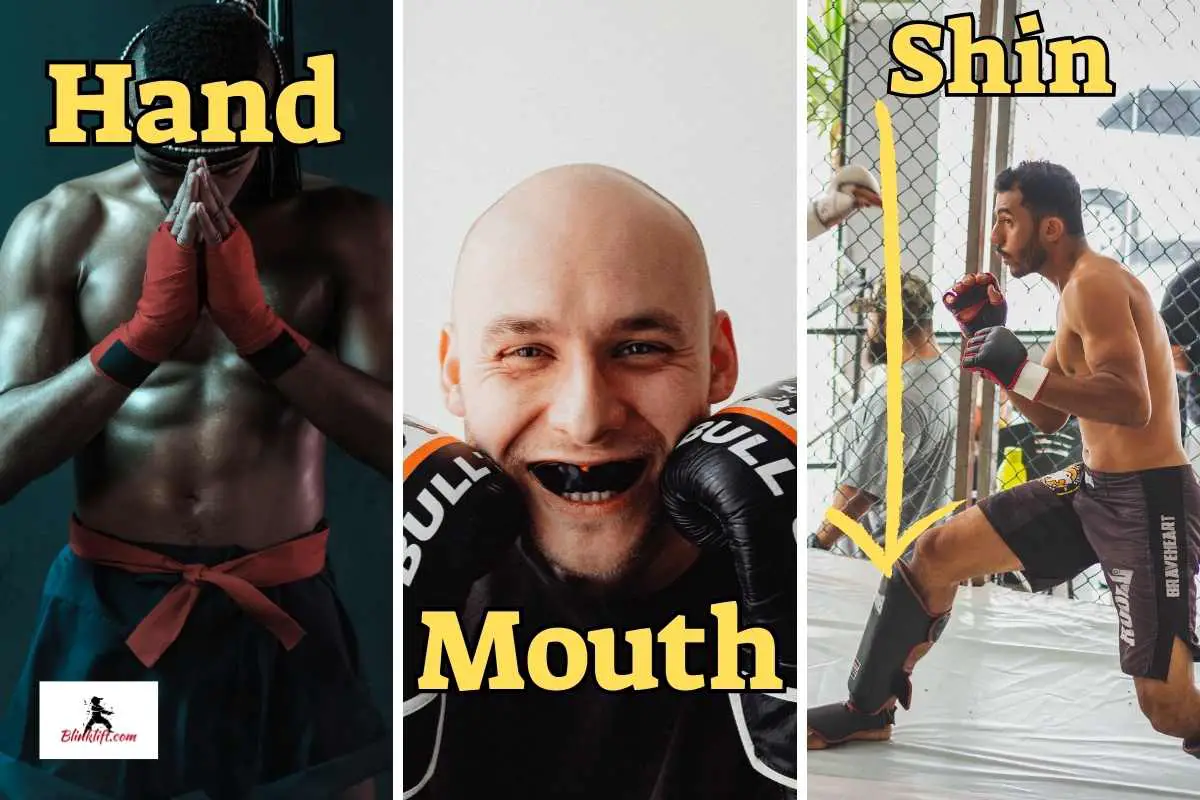
Judo
Let’s now talk about the equipment you’ll have in your Judo training and bouts.
First, let’s begin with the equipment you’ll use for training:
- Mouthguard (sometimes not mandatory)
- Gi
- Belt
- Gym Bag
- Grappling Dummy
- Groin Protector (sometimes not mandatory)
- Elbow and Knee Pads
- Mats/Mattress
And now, let’s move on to the equipment you’ll wear in a professional fight:
- Gi
- Belt
That’s everything you’ll need to bring to your Judo competition. However, be sure to bring two sets of uniforms in case you bleed.
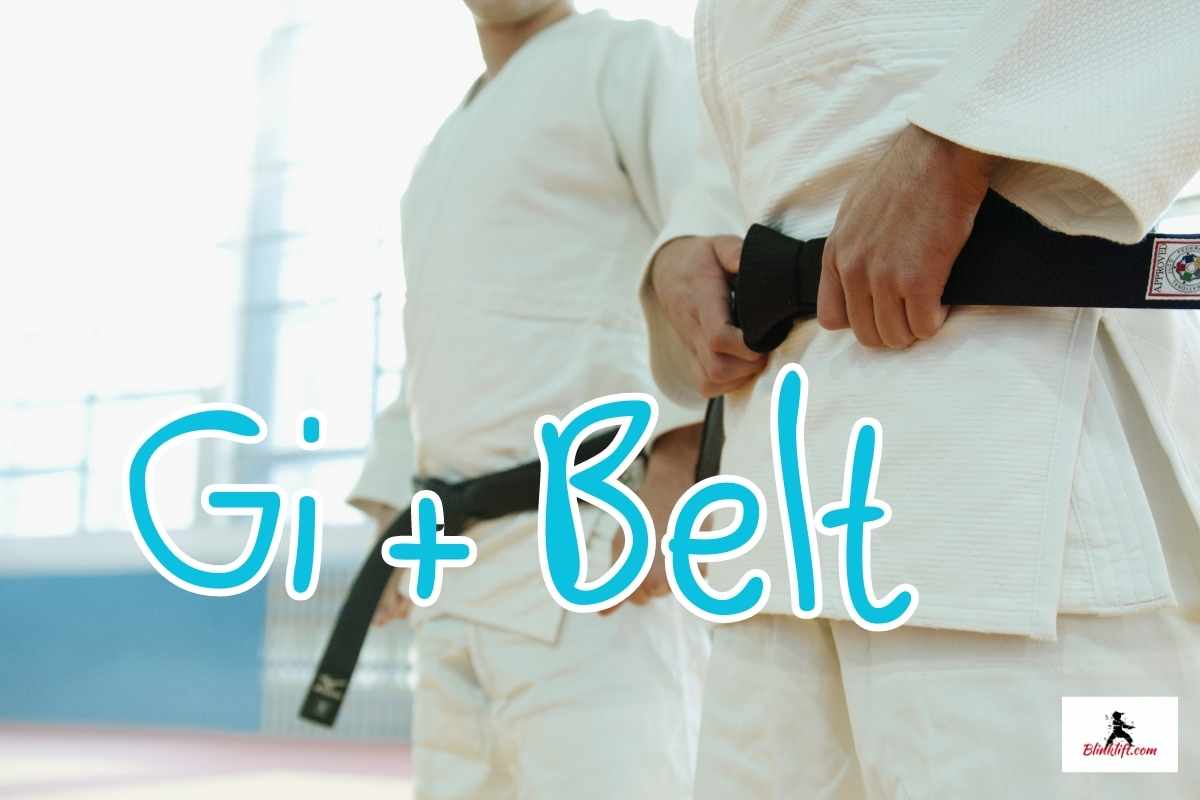
Difference #5 – Strategy
The last difference we’ll review is the strategy you’ll utilize in each martial art. Let me be clear here, Muay Thai and Judo are extremely different. They utilize different fighting techniques, which you’re supposed to understand at this point in the article.
By the way, before we dive into the strategy of each fighting style, I want to clarify to you that, at this point, you’re much more knowledgeable in anything to do with Muay Thai and Judo than 99% of the population. So you’re definitely doing good to yourself by reading this article.
Let’s now dive into the strategy you want to utilize for each martial art, and how they differ from each other.
Muay Thai
We all know how effective Muay Thai can be if you use it correctly. I’ll be honest, many fighters don’t use it correctly, so they end up not being as effective as they can be if they were to use it properly.
Let me give you an example. There are a few prominent Muay Thai styles, such as Muay Sok and Muay Femur. While both are highly effective, they use their skill sets very distinctly. Muay Sok is all about using elbows effectively. However, Muay Femur is a more technical approach to Thai Boxing.
If you want to read more about the different Muay Thai styles, follow this link.
The best Muay Thai strategy is managing your distance according to the technique you’re most proficient and comfortable with. For instance, if you’re a clinch fighter, you want to close the distance as often as possible, so you can clinch the opponent and do your magic.
On the other hand, if you love using kicks, you can’t keep on closing the distance, as you won’t be able to kick at head height, which is a trait you must utilize if you’re a kicking guy.
To recap, there are many Muay Thai styles. The primary guideline is to focus on what you’re most comfortable with while adapting to your opponent.
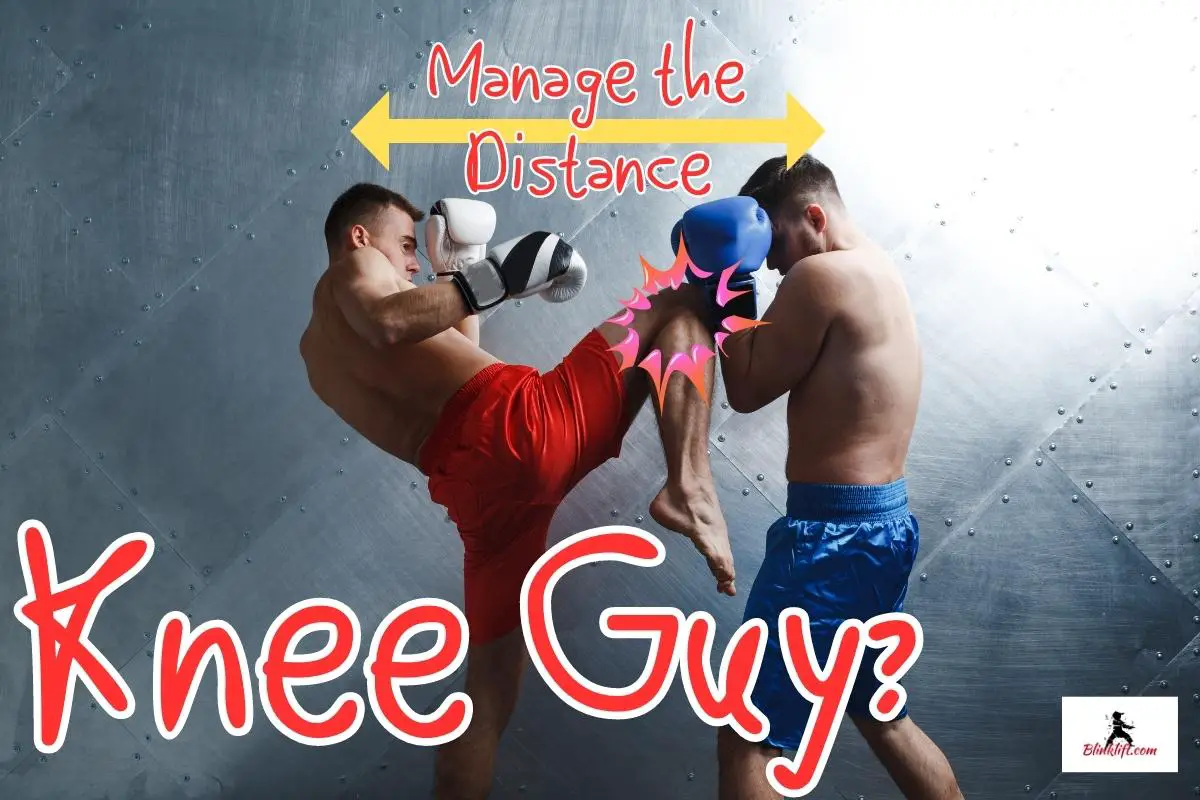
Judo
As you can remember, Judo is all about grappling. It focuses primarily on throws and takedowns. But, it also permits various submissions, such as chokes and arm locks. Therefore, you can imagine that it utilizes close-range grappling rather than striking and distance management as much as Muay Thai does.
Judo works best in close ranges, then. For the best strategy you can develop, you want to close the distance as soon as possible and attack, primarily by transitioning the fight to the ground. This is where you can deal with your opponent most effectively.
Imagine trying to win a kicking bout against a Nuk Muay, who is (1) more conditioned than 99% of the population and (B) is capable of kicking extremely powerfully. Instead, your strategy should be to close the distance and attack.
You now know how Muay Thai and Judo are different. Let’s move onto a non-less important subject, their similarities. You’ll be surprised at how similar these martial arts are, which focus is so entirely different!
Judo vs. Muay Thai – Similarities
I found there to be three primary similarities between Judo and Muay Thai. These show just how much they’re similar, as you’ll see soon. Although they focus on entirely different techniques and have distinct fight approaches, you’ll soon see just how much they’re alike, which is astounding to me.
While researching this article, I realized just how much I truly love and appreciate martial arts. Not only will they teach you to fight, but they’ll also be a self-improvement and self-development platform.
So let’s dive into the first similar trait:
Similarity #1 – Purpose
The purpose of most martial arts is to teach people to fight effectively. In ancient times, there weren’t weapons all the time. Take the Samurais as an example. Samurais prepared for a situation where they were afoot and unharmed. In that case, they still needed to defend themselves if something went south. That’s why they also learned Jiu-Jitsu, at least the ancient version of it.
The purpose of both Muay Thai and Judo is to teach others to fight effectively. It allows its trainees to fight aggressively and with respect, making them highly effective fighters.
Similarity #2 – Effectiveness
The second similar trait is their effectiveness. I’ll dive straight to the point because I want to continue to the part of the article where we compare the two fighting styles in a real fight and see which is superior.
Both Judo and Muay Thai are highly effective martial arts, capable of inflicting a lot of damage on their opponents while incapacitating their ability to fight back. So if you want to become a fantastic fighter, you can learn both fighting styles.
The only thing I will say that you should do is start training as soon as possible. If you want to experience the many benefits that come along with martial arts training (and trust me, there are plenty) then you must start training now. Don’t hesitate to begin, it’s not as difficult and scary as it looks.
Similarity #3 – Principles
The third similar trait is principles. Other than teaching people to fight effectively, it teaches them to be good human beings; to always strive for improvement and growth, regardless of their starting point.
You’ll learn what discipline truly is and why it matters so much in life. You’ll learn to stand up for yourself and be quicker on your feet. These are all highly desirable traits that you’ll achieve by training in both Judo and Muay Thai.
I would say that, from my vast experience, Judo and Muay Thai are two of the best martial arts for that purpose. If you want to develop yourself as a person while learning to fight, there’s no better way of doing that than to learn to fight through martial arts. I think it’s truly astounding.
Judo vs. Muay Thai in a Fight (Who Would Win?)
We’re now past the boring part of this article! It’s time we review a fight, which was one of the most interesting ones I saw. I’ve been thinking about who would win in a bout where a Nuk Muay and a Judoka were to fight. And honestly, I couldn’t quite come up with a decisive winner. But this is the conclusion I came up with. m
The Judoka (Judo Trainee) will win in a fight against a Nuk Muay (Muay Thai Trainee) because grappling will almost always beat striking. Once the Judoka gets rushes forward and grapples the Nuk Muay to the ground, there’ll be nothing stopping him from finishing victorious.
However, the Muay Thai fighter has some attributes that make him superior to the Judoka. Some of these attributes are better conditioning, knowing to fight long-distance, and being in better shape.
I watched as many Judo vs. Muay Thai fights as I could and saw the same pattern. The Judoka closed the distance, grappled the opponent to the ground, and finished the fight from there. The Muay Thai trainee simply doesn’t know how to deal with this.
Watch this fight to see the same pattern. The Judo fighter closes the distance and finishes the fight fairly easily from the ground. The Nuk Muay can’t react because he never learned to fight when his back is pinned to the ground.
This is a skill you’ll learn in BJJ, which primarily focuses on ground grappling more than anything else.
Which Is Better for Self-Defense, Muay Thai or Judo?
When we discuss the effectiveness of martial art for self-defense, the primary attributes I’m looking for are (1) conditioning, (2) effectiveness, and (3) adaptiveness. In my experience, when you know to get hit in the face and not move an inch, throw a powerful punch, and adapt to your opponent, you’ll be good to go in a real fight.
So which is better for that purpose, Judo or Muay Thai?
Judo is better for self-defense than Muay Thai because once you throw your opponent to the ground and pin him, you have the fight in your hands. However, Muay Thai requires distance management and is overall a riskier approach. If you want to punch the opponent in his face, you must risk getting hit first.
This is why Thai Boxing isn’t as effective as grappling, in my eyes.
Now, don’t get me wrong. I do Muay Thai almost every day and I absolutely love it. I also think it’s one of the most effective martial arts for fighting in general. I can currently beat most people I encounter, I would say more than 95%. However, Judo and BJJ, which focus on grappling, are simply more effective.
Fewer people know to defend against grappling and are overall more effective for self-defense and fighting. I would be in a world of trouble if I were to face a Judoka on the street, as he would probably be able to win. I’ll still give my best, though.
Should I Learn Judo or Muay Thai?
Whether you should learn Muay Thai or Judo is highly dependent on your goals and desires. If you’re interested in learning a more grappling-based fighting style, then you want to go with the latter. On the other hand, if you’re interested in throwing powerful knees, elbows, kicks, and punches, then the first is much more suitable.
You should learn Judo if you’re interested in learning grappling, primarily takedowns, throws, and various submissions. On the other hand, if you want to learn punches, kicks, elbows, knees, clinching, and some sweeps and throws, Muay Thai is for you. Do you want grappling or striking? Here’s your answer.
I believe that both ways are fantastic. You’ll see many Muay Thai fighters beating the heck out of their Judo opponents. You’ll also see the opposite happening as well. So you want to think about which one you prefer learning.
I currently do Muay Thai so I can only talk about my experience. Learning Muay Thai has been one of the best decisions I’ve ever made in my life. I now trust my instincts and am much more confident about my skills as a fighter. I love myself more and I can’t wait to attend the next class (and it has been a few years now!) Imagine being as stoked about attending the next fighting class after more than three years of dedicated and consistent training. I find it incredible.
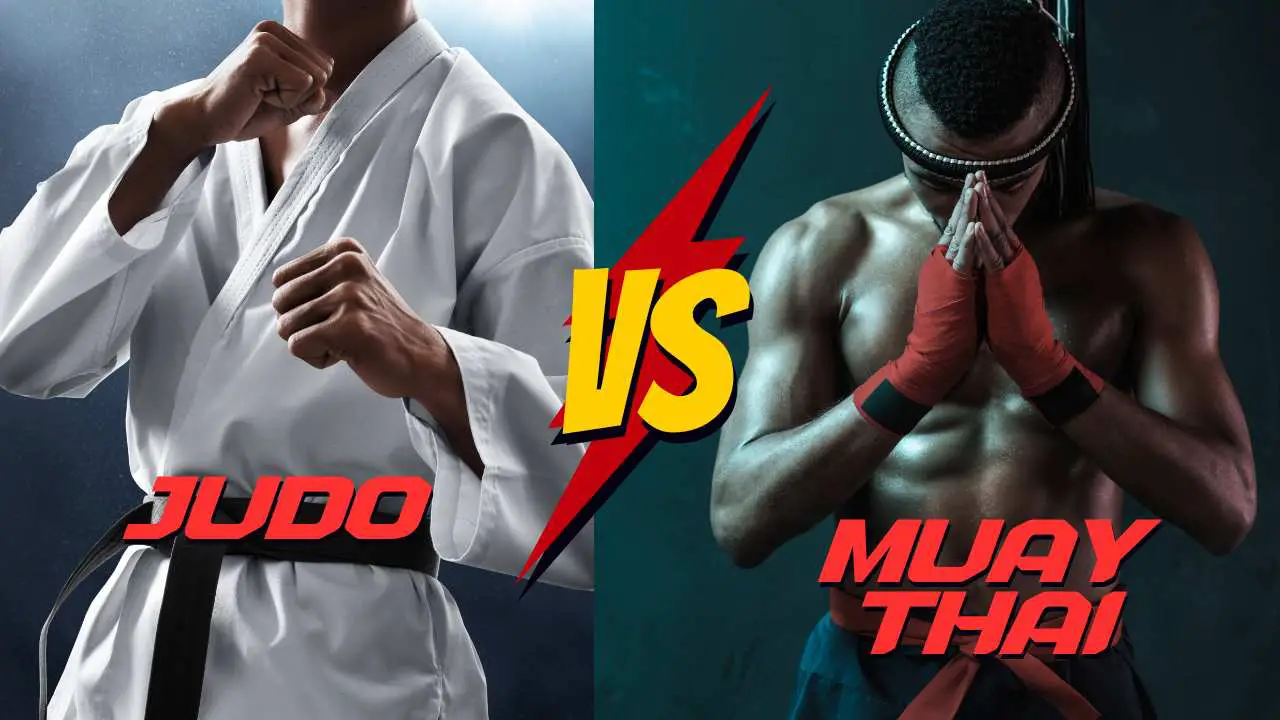
Testimonials
We’re now at my favorite part of this article. This part will be entirely about what real Judo and Muay Thai trainees have to say about martial art. You’ll be able to spot what works and what doesn’t. I’ve not deliberately filtered the testimonials to be positive-heavy, it’s just what I found by asking my fellow practitioners and by reaching out to people online.
I hope you enjoy this!
Muay Thai
there’s a dude at my gym who lost 70 pounds in three months (with Muay Thai), and now I’m pushing for him to compete
I started Muay Thai at 22 with no background besides a year of bjj. I love it!!! Hopefully you will too. No need to over think it. If you have solid coaches they should give you drills to work footwork and movement.
We train hard. No. We train ruthlessly. I was bruised and my shins were “candy shins”, soft and weak. Remember the last time you found the coffee table edge with your shin walking through the living room at 1 AM? That. Every day. Bruised, swollen, and sensitive as ****. After a few months, the bruising and swelling, and pain subside and one day your shins became edged baseball bats. Your body turns to stone.
As someone who has been training in Muay Thai for three years, I can say that it’s been an incredible journey so far. One thing that I love about Muay Thai is that it’s a very humanized martial art, meaning that it focuses on practical techniques that can be used in real-life situations
Judo
Personally, after 5 years of progressively more intense training (now training 4–5 hours a week), I am more fit, more flexible, and stronger than I ever was in my adult life. I still have more belly fat than I would like, but my BMI did improve noticeably.
I knew a bouncer at a night club that broke his leg, because he made the mistake of grabbing ahold of a Judoka (a judo expert) when he wasn’t really justified in doing so. The bouncer was given ONE warning to let go, and he failed to oblige. The Judoka said, “Fine.” He grabbed the bouncer back, lowered his center of gravity, and THREW the bouncer into a brick wall.
It (Judo) has been proven to work pretty much everywhere, from the ring to the street, and against pretty much everyone, from MT guys to BJJ guys. It is always pressure tested so you know you can do what you are trying to do, and concrete is hard.
Final Words
I would love to continue talking about Muay Thai and Judo with you. However, I must go now.
If you can take just one thing from this article, this is what I would like you to take. Martial arts are beautiful, in all their forms. They teach you how to become excellent fighters, capable of causing tons of damage to your opponent. They also teach you to get hit in the face and not move an inch.
I want you to pick up either Judo or Muay Thai (if you haven’t already) and commence your fighting journey. You would notice so many positive benefits and results from your training, it’ll be absolutely and utterly worth it.
I thank you for reading and I hope you begin your journey, as it was my initial intention with this article. So make sure to choose one and start your training!
Here are other articles you’ll benefit from reading:
Aikido vs. Judo – The Ultimate Showdown!
7 Tips to Perfect Your Takedowns (For BJJ & Judo)
Kouchi Gari Complete Breakdown – For BJJ & Judo
Foot Sweep Guide (For BJJ, Judo, and Wrestling)
Seoi Nage – Takedown Breakdown (BJJ & Judo)

